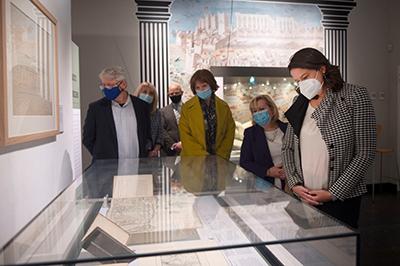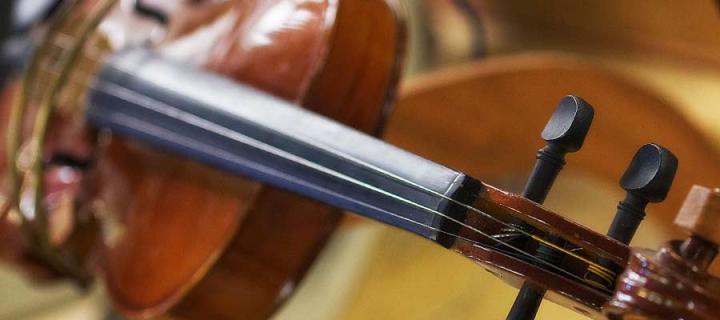Greek Minister of Education and Religious Affairs visits 'Edina/Athena' exhibition
Minister Niki Kerameus toured the exhibition exploring Scottish links with the Greek Revolution of 1821 with its curator Dr Alasdair Grant.

‘Even in Greece, the contribution of Scots and the Scottish capital, Edinburgh, to the Greek Revolution of 1821 isn’t well-known,’ said Greece’s Minister for Education and Religious Affairs, Ms Niki Kerameus, during a guided tour of the exhibition ‘Edina/Athena: The Greek Revolution and the Athens of the North, 1821–2021’, now showing at the University of Edinburgh’s Main Library in George Square, on Thursday 4 November.
The Minister, on her way to attend the COP26 climate summit in Glasgow, paid tribute to the imagination and collective efforts of colleagues from the School of History, Classics and Archaeology and the Centre for Research Collections who mounted the exhibition, and enjoyed the authoritative and lively tour offered by the curator, Dr Alasdair Grant.
Rare loans
The exhibition is sponsored by the A. G. Leventis Foundation and forms part of Protovoulia 1821–2021 (Initiative 1821–2021), a series of worldwide events commemorating the 200th anniversary of the start of the Revolution that would lead to the creation of Greece as an independent nation state in 1830. The Foundation has generously supported the work of the Department of Classics since 1997 and over the years made significant contributions to work on library collections, too. 'Edina/Athena' features rare loans of original material from the Royal Collection Trust, the National Galleries of Scotland, the Bodleian Library, the Special Collections of the University of Aberdeen, the Benaki Museum in Athens, and the British School at Athens, as well as manuscripts, photographs and drawings from the University’s own Centre for Research Collections and the National Library of Scotland, many unpublished.
Also included in the exhibition are works by two contemporary Scottish artists, Karen Cunningham and Professor Alexander Stoddart, which frame the exhibition. 'Parataxis', a specially commissioned two-part textile and moving image work by Karen Cunningham, a PhD candidate at Edinburgh College of Art, welcomes visitors in the anteroom and emphasises the often-silenced experiences and contributions of women in ancient Greek culture, nineteenth-century Edinburgh, and the Revolution of 1821 itself.
'Edina reflecting the glory of Athena' by Professor Alexander Stoddart, the Queen’s Sculptor in Ordinary in Scotland ends the exhibition. This relief in neoclassical style, from Stoddart’s statue of William Henry Playfair, depicts the two cities – ancient Athens and modern Edinburgh – personified.
The sisters Athena and Edina
Commenting, Professor Roderick Beaton, the 12th A. G. Leventis Visiting Professor of Greek, drew attention to the slightly taller stature of Athena, and the shy, almost coy, way in which her younger sibling, Edina, looks up at the awesome Greek goddess. As Minister Kerameus and all present agreed, there could be no more fitting way to highlight the fascinating and little-known parallels between Edinburgh (the ‘Athens of the North’) and the city of Athens, which became a national capital as a result of the Greek Revolution of 1821.




